Zion National Park is the most popular of Utah’s five national parks. It brings many visitors to the state each year and offers views you can’t find anywhere else. But there are a few things that make the park extra special. We’re covering 10 mind-blowing facts about Zion National Park and taking a look at its gorgeous landscape.
1. It’s Utah’s First National Park
Zion National Park was the 15th park to join the national park system in 1919. But its history began long before that, with the first nomadic Indian groups traveling through the region around 7,000 years ago. The area was first called Mukuntuweap by the Southern Paiute tribes, which means “straight canyon”. European settlers moved into the region in the late 1800s and named it Zion, which means “sanctuary” or “refuge.”
President Taft set aside the land for Zion National Park in 1909, calling it the Munkutuweap National Monument. The name changed to Zion National Monument in 1918 and then a final time to its current name in 1919.

It’s easy to see how this gorgeous place earned the name Zion.
©Stephen Moehle/Shutterstock.com
2. It’s the 3rd-Most-Popular National Park in America
Zion National Park received 4,692,417 visitors in 2022. That’s just 40,000 less than the Grand Canyon! If the numbers keep rising, it may become the 2nd-most-visited park soon. But there’s likely no chance of it catching the first-place winner, Great Smoky Mountains National Park, at nearly 13 million visitors!

You may notice that Zion can get a bit crowded during the spring and fall months.
©EB Adventure Photography/Shutterstock.com
3. The Park Is Home to an Endangered Species
Zion National Park is an Important Bird Area, a title designated by the Bird Life International program. It’s home to the California condor, which is the largest flying bird in North America. The California condor is endangered, with an estimated 275 free-flying birds in the southwest U.S. Many of them nest within Zion, and you can sometimes spot them above Angels Landing in the park.
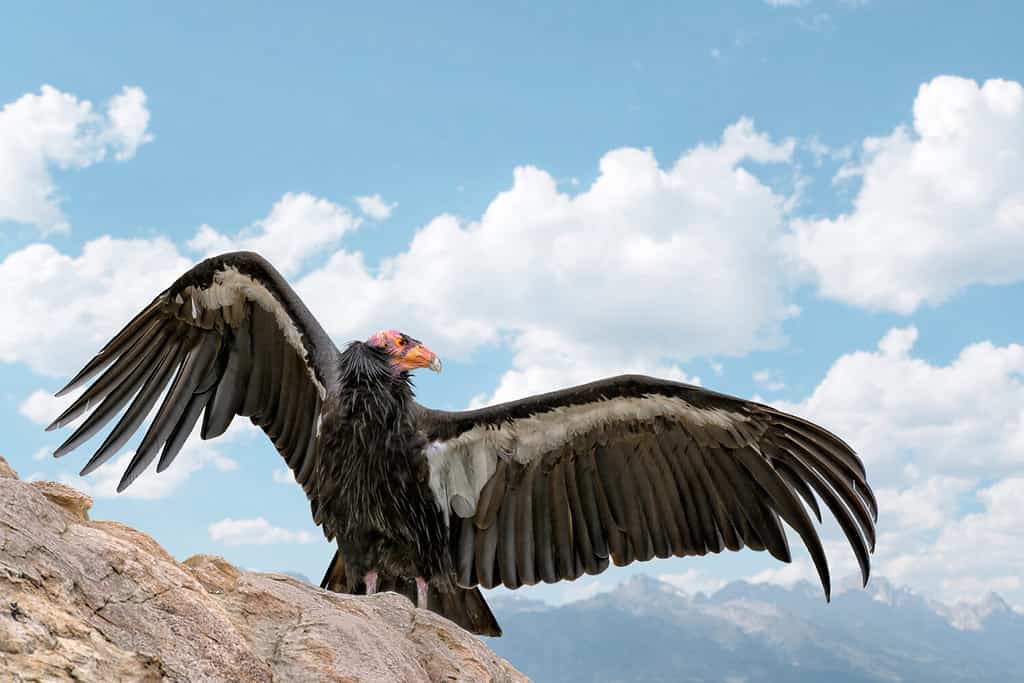
Like vultures, California condors survive by consuming the carcasses of dead animals.
©Barbara Ash/Shutterstock.com
4. It’s Home to One of the Largest Natural Arches in the World
Kolob Arch is one of the most unique parts of Zion National Park. It’s a bit of a hike to get to, but the view makes it all worth it. The arch spans 287 feet, making it the sixth largest in the world and the 2nd-largest natural arch in the U.S. There are a few other arches within Zion, though they are much smaller than Kolob.

This massive arch is an architectural wonder.
©Kelly vanDellen/Shutterstock.com
5. It Can Get Pretty Warm
Utah is known for its high temperatures during the summer, often in the 100s at peak times of the day. However, the hottest day at Zion was July 11, 2021, when it reached a high of 115°F.

The park can get pretty warm, but at least there are places to take a dip in.
©Jeremy Christensen/Shutterstock.com
6. There’s Hiking for Everyone at Zion
One thing that makes Zion National Park great is that there is so much hiking! There are easy hikes that start at 0.4 miles, and a few hikes are wheelchair accessible. There are also more challenging hikes, with the longest and most strenuous one being the Zion Traverse. It’s a 49.7-mile trail that takes experienced hikers from Lee Pass to East Rim Trailhead.

Some portions of the park have marked paths, others are completely unmarked, and a few are wheelchair-accessible.
©RomanKhomlyak/Shutterstock.com
7. The Park Is Connected by Roads to the Grand Canyon
For a long time, getting to Zion wasn’t an easy feat. The closest train station was 80 miles away, and the roads to Zion were rough dirt roads. The park service wanted to find a way to connect the ever-popular Grand Canyon to Zion, Bryce Canyon, and the Canyonlands. The attractions were so close, but there were no roads through them, only around. To solve this, they constructed the Zion-Mount Carmel Road, which goes through Zion and brings travelers to the other 2 national parks. It cuts the drive between the Grand Canyon and Zion by about half. However, during the busy season, it may actually make travel times longer.
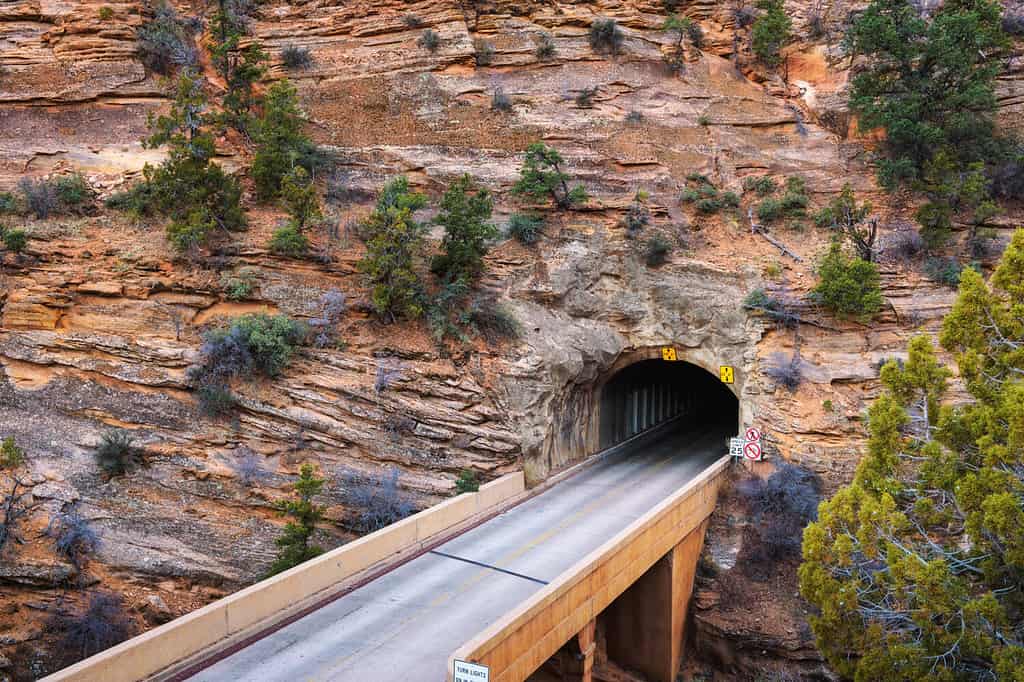
The Zion-Mount Caramel Road takes drivers through a narrow tunnel in the rocks.
©Nick Fox/Shutterstock.com
8. It’s Home to a Very Dangerous Hike
One of the most popular and most dangerous hikes at Zion is Angels Landing. Though it’s just a 2.2-mile hike to the summit, hikes will face steep cliffs, narrow walking paths, and huge drop-offs. That’s one of the many reasons that the hike requires a permit.
One of the main reasons that the permit is so important is so that hikers know what they are getting themselves into. There are certainly more dangerous places to hike, but at least 15 hikers have died hiking Angels Landing, so it’s worth taking precautions. Just know that there is a ½ mile section of trail that is very narrow and has steep cliffs on both sides. There are also chain link handrails in the section to add a measure of safety.
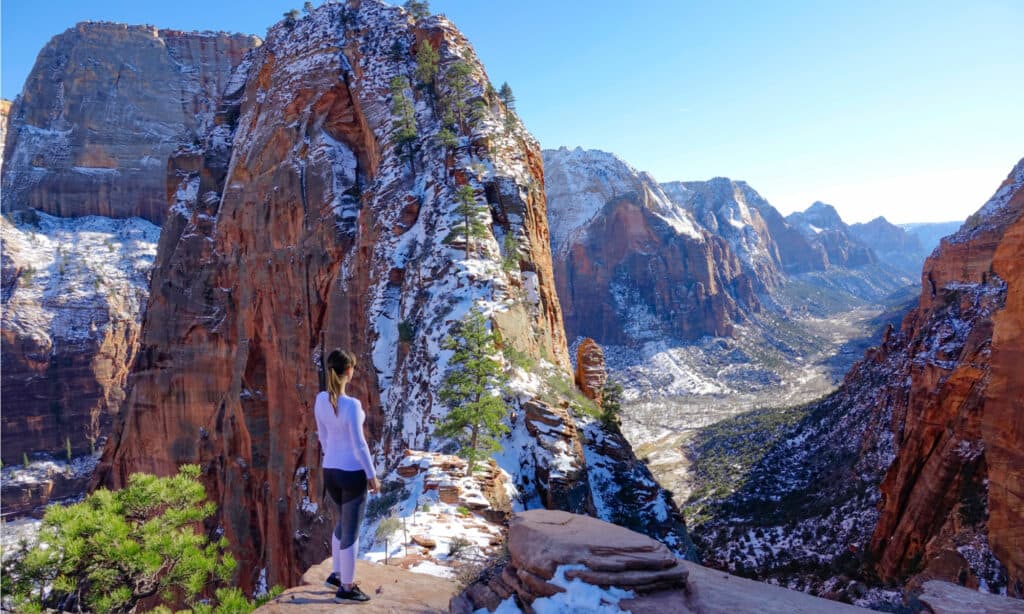
If you aren’t an experienced hiker, you may want to try an easier hike first.
©Flystock/Shutterstock.com
9. Zion Has a Subway
Now it’s not like New York; Zion doesn’t have an underground travel station. The ‘Subway’ in Zion is actually a trail. The Left Fork of North Creek is called the Subway because it shares some similarities with the stations of New York. It looks like a tunnel, although the top isn’t closed over. Instead of train cars, you’ll find pools of water on the Subway floor.
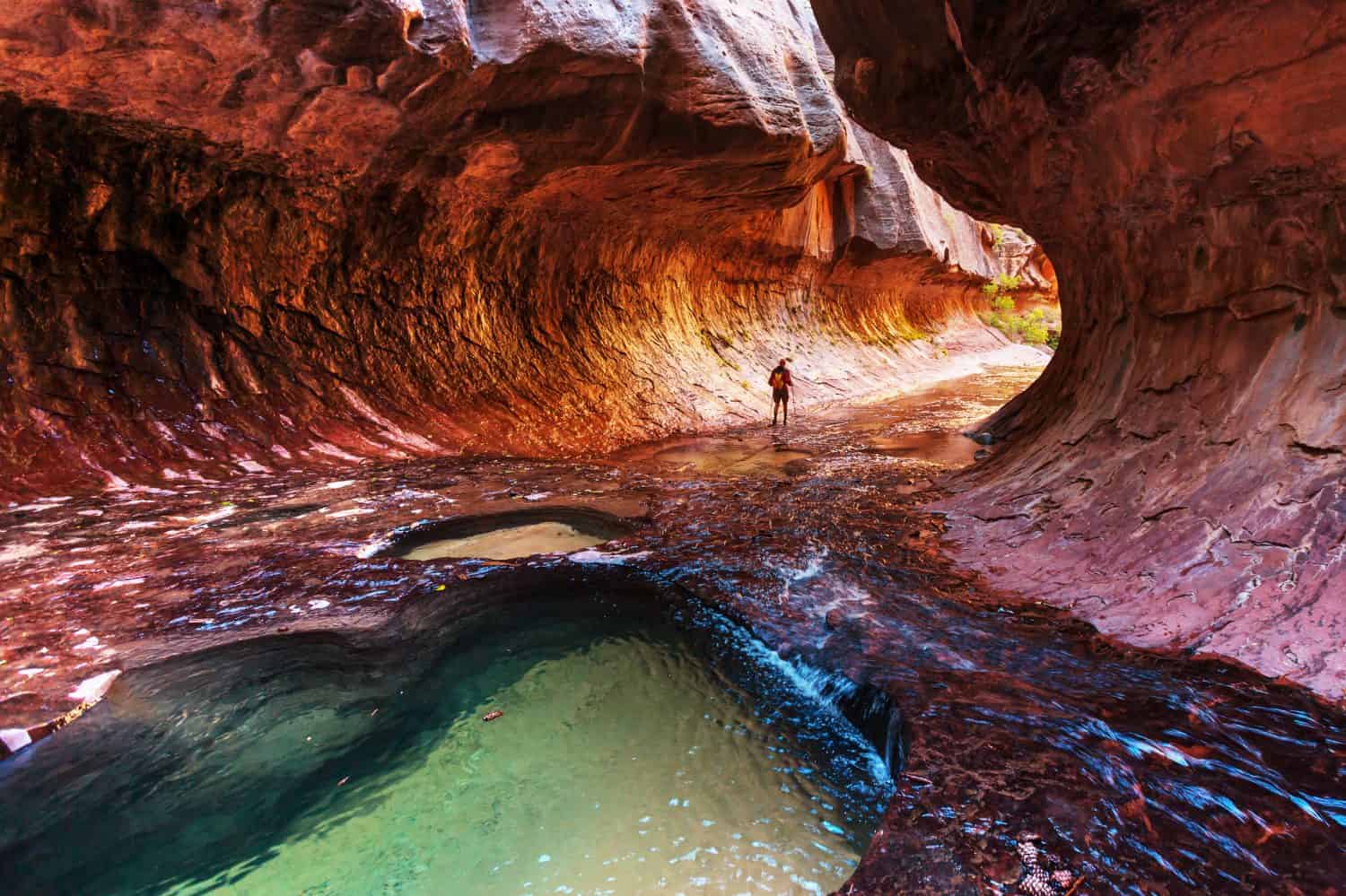
The Subway gets its name from the appearance of a tunnel through the rocks.
©Galyna Andrushko/Shutterstock.com
10. The Coldest Temperature Ever Recorded Was -15 Degrees
In 1937, Zion National Park experienced its coldest winter temperature to date. On January 21 of that year, meteorologists recorded a temperature of -15°F. The park usually experiences cold winters, but that one was certainly the coldest.
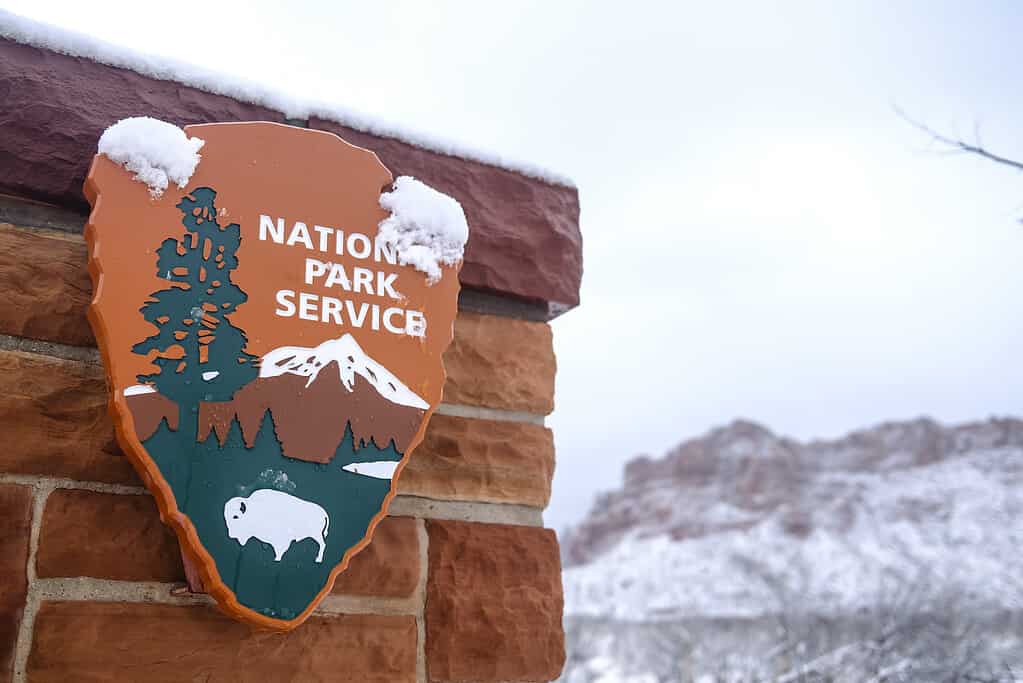
The winter can be brutal at Zion National Park, with temperatures sometimes dropping into the negatives.
©iStock.com/Mike Lewis
Thank you for reading! Have some feedback for us? Contact the AZ Animals editorial team.








